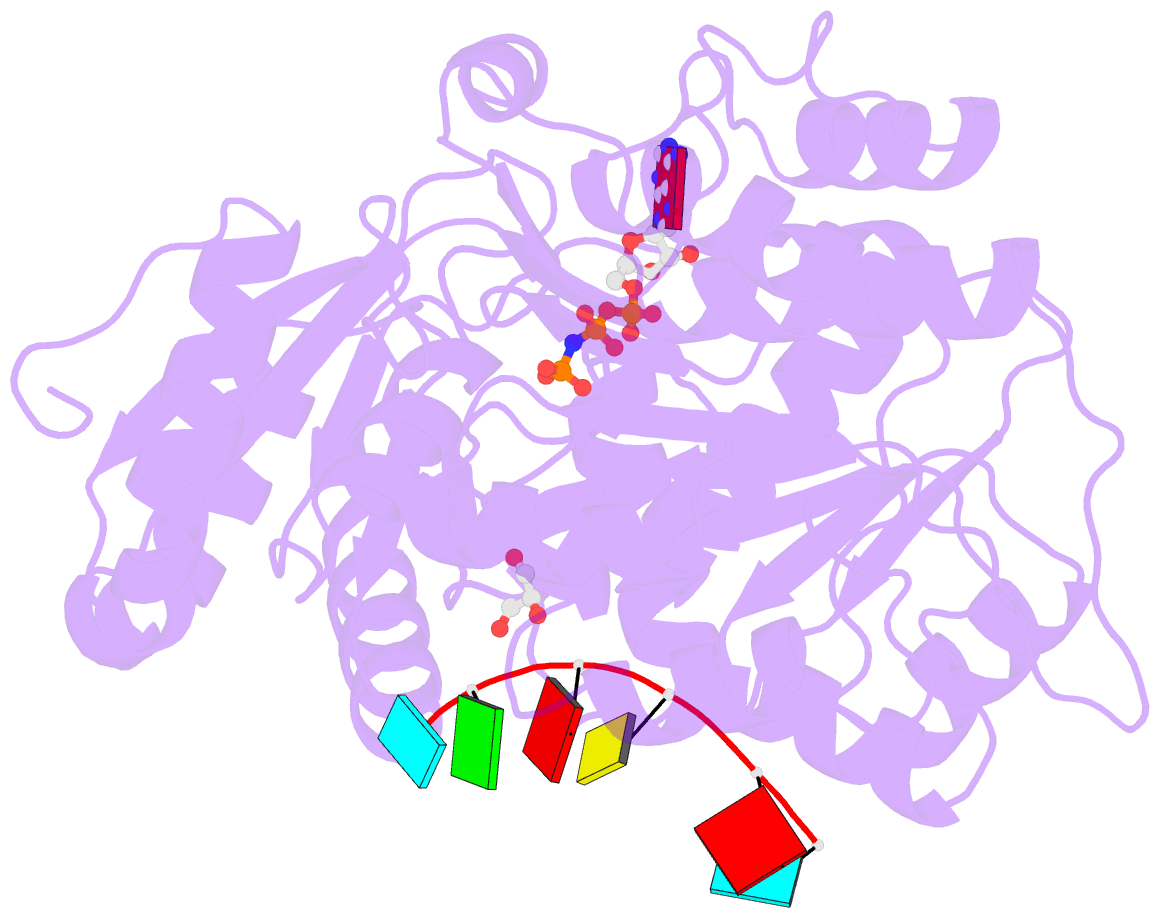Summary information and primary citation
- PDB-id
- 4d25; SNAP-derived features in text and JSON formats;
DNAproDB
- Class
- hydrolase
- Method
- X-ray (1.9 Å)
- Summary
- Crystal structure of the bombyx mori vasa helicase (e339q) in complex with RNA and amppnp
- Reference
- Xiol J, Spinelli P, Laussmann MA, Homolka D, Yang Z, Cora E, Coute Y, Conn S, Kadlec J, Sachidanandam R, Kaksonen M, Cusack S, Ephrussi A, Pillai RS (2014): "RNA Clamping by Vasa Assembles a Pirna Amplifier Complex on Transposon Transcripts." Cell(Cambridge,Mass.), 157, 1698. doi: 10.1016/J.CELL.2014.05.018.
- Abstract
- Germline-specific Piwi-interacting RNAs (piRNAs) protect animal genomes against transposons and are essential for fertility. piRNAs targeting active transposons are amplified by the ping-pong cycle, which couples Piwi endonucleolytic slicing of target RNAs to biogenesis of new piRNAs. Here, we describe the identification of a transient Amplifier complex that mediates biogenesis of secondary piRNAs in insect cells. Amplifier is nucleated by the DEAD box RNA helicase Vasa and contains the two Piwi proteins participating in the ping-pong loop, the Tudor protein Qin/Kumo and antisense piRNA guides. These components assemble on the surface of Vasa's helicase domain, which functions as an RNA clamp to anchor Amplifier onto transposon transcripts. We show that ATP-dependent RNP remodeling by Vasa facilitates transfer of 5' sliced piRNA precursors between ping-pong partners, and loss of this activity causes sterility in Drosophila. Our results reveal the molecular basis for the small RNA amplification that confers adaptive immunity against transposons.





